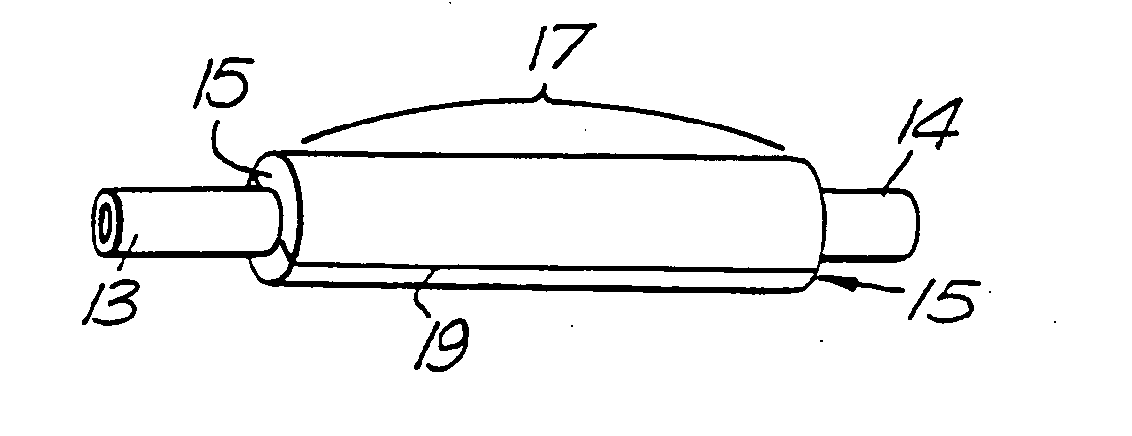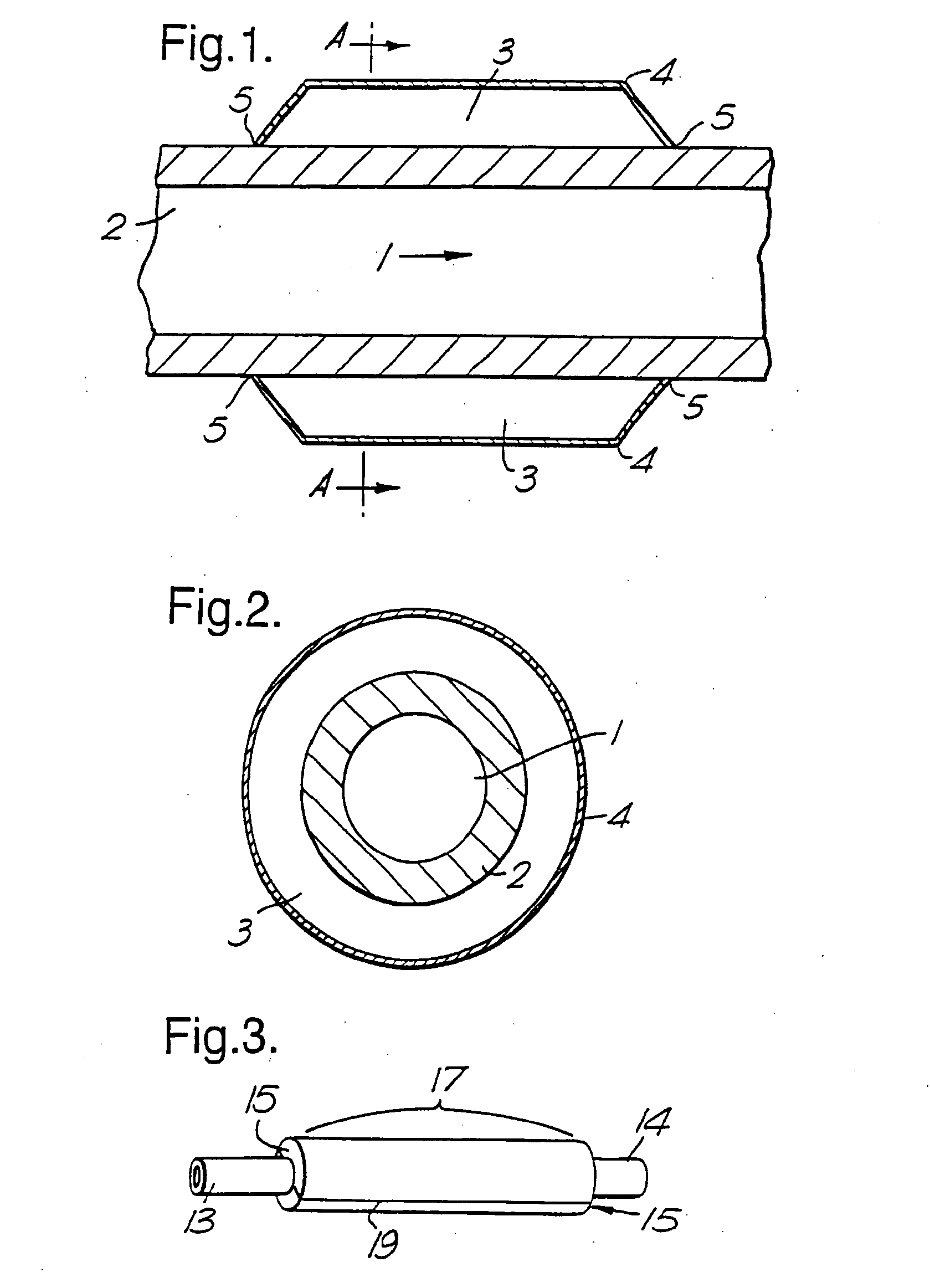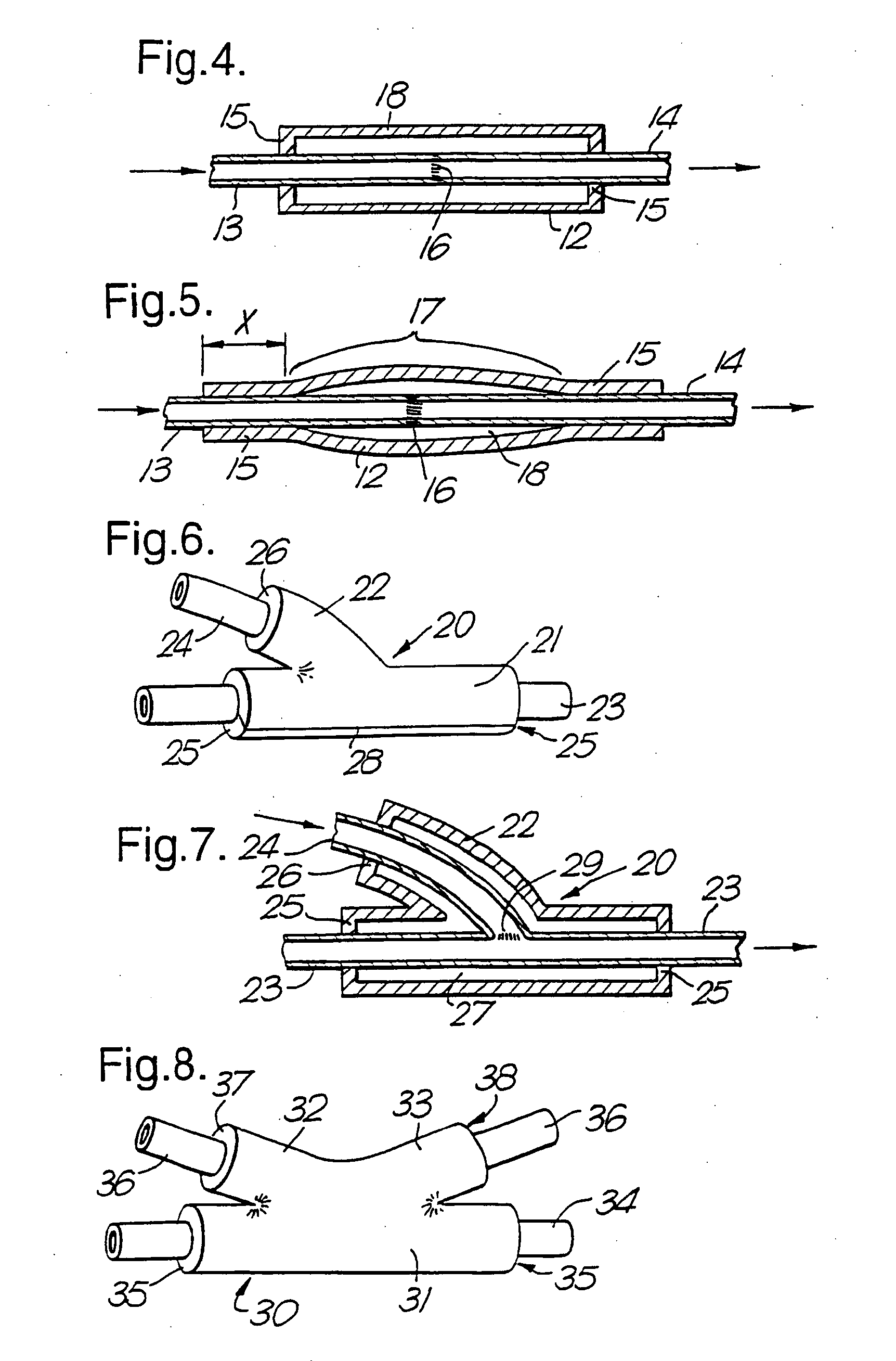Therapeutic Use of Growth Factor, and Delivery Device, Especially for the Treatment of Intimal Hyperplasia
a growth factor and intimal hyperplasia technology, applied in the field of growth factor therapy, can solve the problems of intimal hyperplasia, intimal hyperplasia, aneurysmal dilation and eventual rupture, and achieve the effect of beneficial effects on luminal size and medial and intimal thickening
- Summary
- Abstract
- Description
- Claims
- Application Information
AI Technical Summary
Benefits of technology
Problems solved by technology
Method used
Image
Examples
example 1
[0191]The effect of endothelial cell (EC)-specific VEGF gene transfer on the thickening of the intima was studied using a silicone collar inserted around carotid arteries which acted both as the agent that caused intimal smooth muscle cell growth and as a reservoir for the gene and vector. The model preserved EC integrity and permitted direct extravascular gene transfer without any intravascular manipulation.
example 1.1
Gene Transfer:
[0192]Intimal thickening was induced in the carotid arteries of thirty-two New Zealand White rabbits by inserting an inert silicone collar around the arteries under a general anaesthesia (Booth et al., Atherosclerosis (1989) 76:257-268). Gene transfer was done five days after positioning of the collar by gently opening the collar under anaesthesia and injecting 500 μl plasmid / liposome complexes into the collar (i.e. on the adventitial surface of the artery). No intravascular manipulations were involved in any steps of the studies.
Plasmid / Liposome Complexes:
[0193]Twenty-five μg pCMV5-VEGF-164 plasmid (containing mouse VEGF cDNA (Breier et al., Development (1992) 114:521-32; nucleotides 1-583) was complexed with 25 μl Lipofectin (BRL) while diluted to 500 μl with Ringer solution. Complexes were kept at room temperature at least 15 min before the gene transfer. It was determined previously that at the concentration used in the present study plasmid / Lipofectin complexes we...
example 1.2
[0198]Gene transfer was carried out as described in Example 1.1. L-NAME (70 mg / kg / d) was given to the rabbits in drinking water, starting one day before VEGF (n=5) or lacZ (n=5) gene transfer. Animals were sacrificed 7 days after gene transfer and analysed for the intima / media thickness ratio and histology as described above (Ylä-Herttuala et al., Arteriosclerosis (1986) δ: 230-236; Ylä-Herttuala et al. (1990) supra). The difference in intimal thickening was abolished.
PUM
| Property | Measurement | Unit |
|---|---|---|
| diameter | aaaaa | aaaaa |
| diameter | aaaaa | aaaaa |
| diameter | aaaaa | aaaaa |
Abstract
Description
Claims
Application Information
 Login to View More
Login to View More - R&D
- Intellectual Property
- Life Sciences
- Materials
- Tech Scout
- Unparalleled Data Quality
- Higher Quality Content
- 60% Fewer Hallucinations
Browse by: Latest US Patents, China's latest patents, Technical Efficacy Thesaurus, Application Domain, Technology Topic, Popular Technical Reports.
© 2025 PatSnap. All rights reserved.Legal|Privacy policy|Modern Slavery Act Transparency Statement|Sitemap|About US| Contact US: help@patsnap.com



